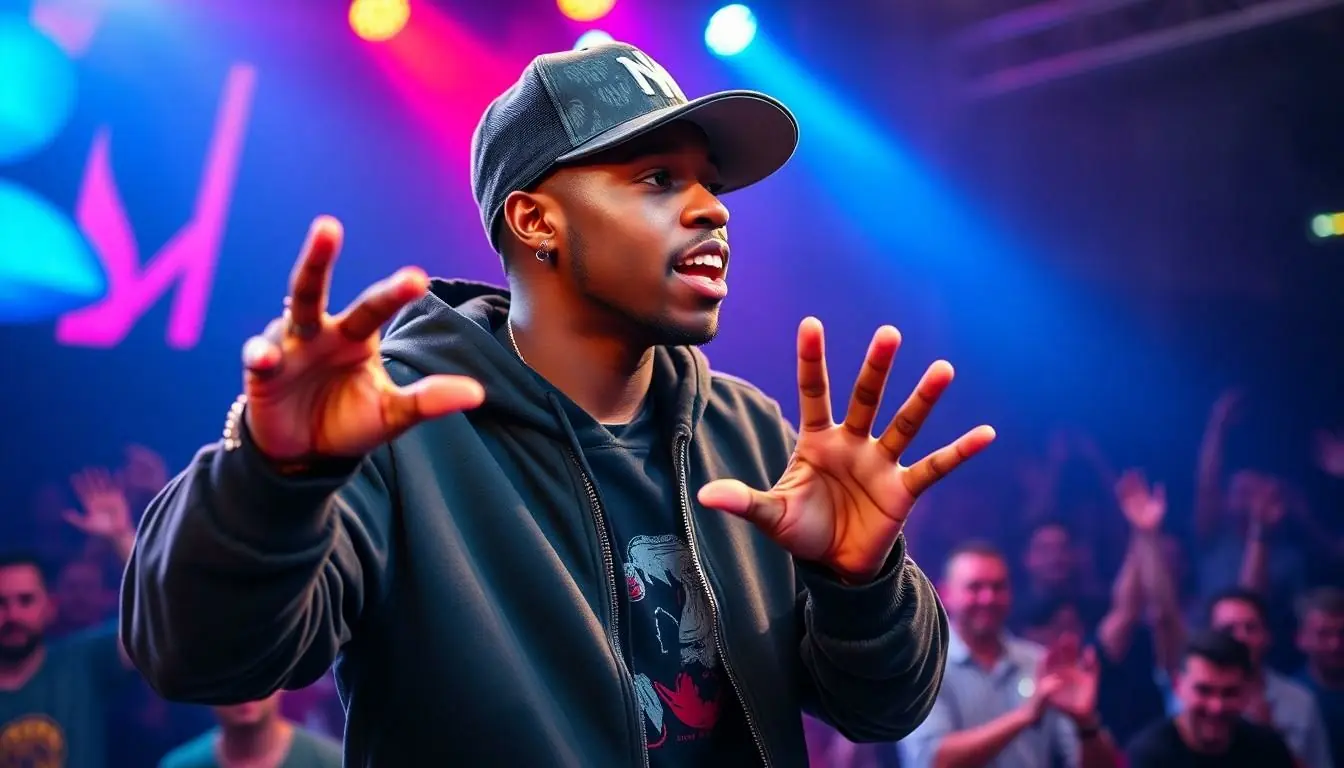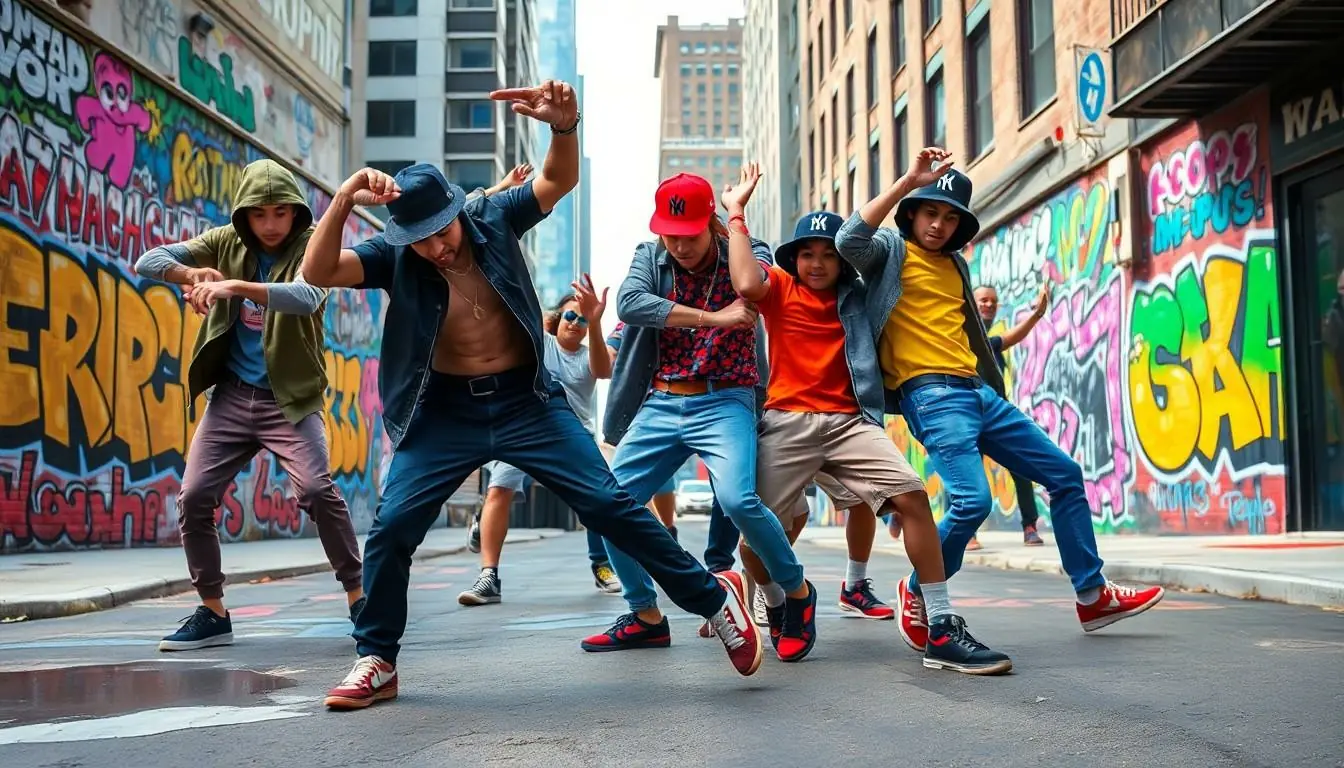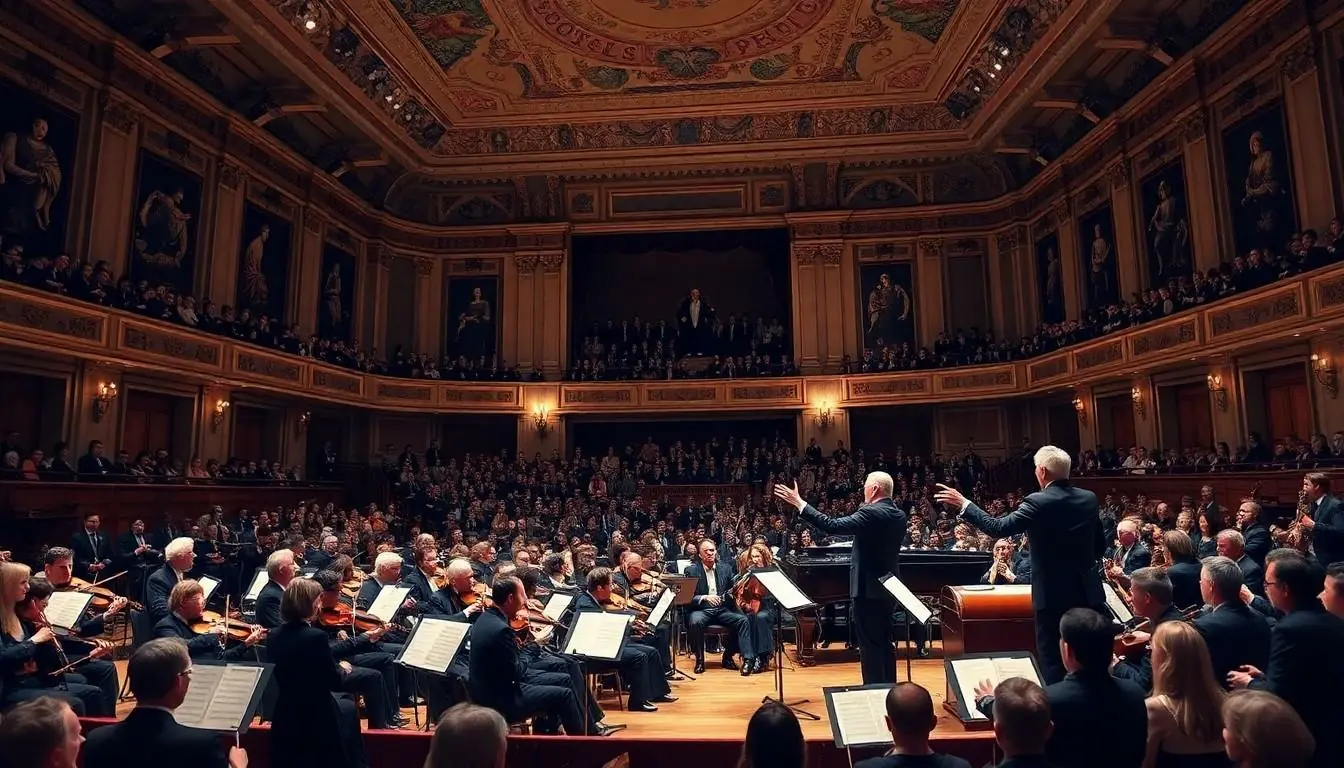Hip hop isn’t just a genre; it’s a vibrant culture that’s taken the world by storm. Born in the streets and fueled by creativity, it’s a dynamic force that blends music, art, and expression. But what really makes hip hop tick? It’s all about the five essential elements that form its foundation.
Table of Contents
ToggleOverview of 5 Elements of Hip Hop
Hip hop culture consists of five essential elements that shape its identity. These elements include MCing, DJing, graffiti art, breakdancing, and knowledge. Each component contributes to the rich tapestry that defines hip hop.
MCing, or rapping, serves as the vocal expression of hip hop. Rappers deliver lyrical content that often addresses social issues, personal experiences, and cultural identity. This form of communication conveys messages and emotions authentically.
DJing involves manipulating sounds and beats to create a unique auditory experience. DJs mix tracks, use turntables, and perform live sets to engage audiences at events. This element forms the backbone of hip hop music, providing rhythm and energy.
Graffiti art acts as the visual representation of hip hop culture. Artists utilize spray paint to create vibrant murals and tags that express individuality and social commentary. This form of artistic expression often transforms urban environments into vibrant canvases.
Breakdancing, also known as b-boying, connects movement and rhythm. Dancers perform intricate footwork and acrobatic maneuvers that showcase physical ability and creativity. This dynamic dance style emerged from hip hop’s origins in the South Bronx during the 1970s.
Knowledge encompasses the deeper understanding of hip hop culture. This element stresses the importance of history, philosophical concepts, and the community surrounding hip hop. Engaging with knowledge fosters a sense of identity and connection among practitioners.
Understanding these five elements provides insight into the vibrant culture of hip hop, illustrating its complexity and depth. Each element plays a vital role, solidifying hip hop as a significant artistic movement.
Element 1: Rapping

Rapping serves as the vocal expression of hip hop culture, addressing diverse themes like social issues and personal experiences through lyrical content.
History of Rapping
Origins trace back to the 1970s in the South Bronx, where DJs began isolating breaks from funk and soul records. MCs emerged to engage the audience, using rhythmic speech patterns to elevate the atmosphere. Influences from African verbal traditions, including the griot storytelling techniques, set foundations for this art form. The genre solidified in the late 1970s with iconic tracks like “Rapper’s Delight” by the Sugarhill Gang, marking a pivotal moment for hip hop. Evolution continued through the 1980s and 1990s, as styles diversified with artists like Grandmaster Flash and Tupac Shakur popularizing intricate narratives and sociopolitical commentary. Rapping remains a powerful tool for self-expression and creativity.
Key Techniques in Rapping
Delivery encompasses various elements, including tone, rhythm, and style. Cadence enhances the musicality of lyrics, allowing rappers to create engaging flows. Wordplay, involving puns and double entendre, captivates listeners through clever lyrics. Rhyme schemes play a crucial role, with techniques such as internal, end, and multisyllabic rhymes expanding lyrical complexity. Freestyling showcases spontaneous creativity, allowing artists to improvise verses in real-time. Incorporating storytelling skills engages audiences while conveying deeper messages. Together, these techniques form a rich tapestry that defines the essence of rapping within hip hop culture.
Element 2: DJing
DJing plays a crucial role in hip hop culture, serving as the foundation for its musical expression. Creating beats and manipulating sounds, DJs provide a dynamic auditory experience that engages audiences. Through skillful mixing, they elevate tracks, making them suitable for dancing or listening. DJs also bring unique elements to live performances, fostering a communal atmosphere.
Importance of DJing in Hip Hop
DJing stands as a pillar in hip hop, establishing the genre’s sound. It developed from the practice of isolating instrumental breaks in songs, allowing MCs to showcase their rapping skills. DJs contribute to the evolution of hip hop by experimenting with sounds, integrating various musical styles. Synonymous with innovation, DJing also lays the groundwork for related styles like turntablism and mashups. This art form not only enhances enjoyment but also cultivates a sense of community among hip hop enthusiasts, making events more memorable.
Notable DJs and Their Impact
Famed DJs have significantly shaped the hip hop landscape. Grandmaster Flash pioneered techniques like cutting and scratching, which revolutionized live performances. Cool Herc, often credited as the originator of hip hop, introduced the “breakbeat,” laying the cornerstone for urban parties. DJ Premier defined the sound of East Coast hip hop through his innovative production techniques. Furthermore, Qbert and Mix Master Mike pushed the boundaries of turntablism, demonstrating the artistry of DJing. Each of these influential figures enriched hip hop with their skills, spotlighting the importance of DJs in the genre’s evolution.
Element 3: Breaking
Breaking, also known as breakdancing, is a key element of hip hop culture that combines athleticism with expressive movement. This dance form emerged in the late 1970s and gained popularity in the 1980s, showcasing creativity and individual style.
The Evolution of Breaking
The origins of breaking trace back to the South Bronx, where dancers first utilized the rhythmic breaks from funk music. This dance style quickly spread throughout urban centers in the United States. Early pioneers, such as Kool Herc, introduced breaking at parties and block events, helping to establish it as a core component of hip hop culture. Over time, the dance progressed, and various influences, including African and Latin dance forms, merged to create distinct styles. Breaking’s prevalence in pop culture surged with films like “Flashdance” and “Beat Street,” solidifying its position as a global dance phenomenon.
Styles and Techniques in Breaking
Breaking encompasses several unique styles, including top rock, down rock, power moves, and freezes. Top rock involves standing footwork that allows dancers to showcase their personality, while down rock emphasizes movements performed on the ground. Power moves highlight athletic prowess through spins and flips, captivating audiences. Freezing, the final element, allows dancers to strike artistic poses, demonstrating balance and control. Each style contributes to the dynamic nature of breaking, making it not only a dance but also an impressive athletic performance. Competitions, known as battles, further amplify the art form, encouraging creativity and musical interpretation.
Element 4: Graffiti
Graffiti represents a powerful form of artistic expression within hip hop culture. It combines vibrant colors and bold designs, forming a visual counterpart to music and dance.
The Art of Graffiti
Artistic expression captures the essence of graffiti through its unique styles and techniques. Street artists use spray paint, markers, and stencils to create works that convey messages or showcase personal creativity. Tagging, a popular technique, involves signing one’s name with a distinctive logo or style, while murals often depict larger, intricate images that reflect cultural themes. Notable artists like Banksy and Jean-Michel Basquiat have influenced the art form, earning recognition beyond the streets. Authenticity remains crucial, with artists challenging societal norms and political issues through their work. Graffiti not only decorates urban landscapes but transforms them into canvases showcasing individuality.
Graffiti’s Role in Hip Hop Culture
Graffiti plays a fundamental role in hip hop culture, acting as a visual representation of its principles. The art form emerged alongside the music, emphasizing creativity and rebellion against mainstream standards. Public spaces serve as canvases for artists who wish to share their messages, often reflecting social and political commentary. Streets become galleries, where local voices find expression and visibility. Additionally, collaborations between graffiti artists and musicians amplify the connection between these elements, enhancing hip hop’s overall narrative. The presence of graffiti in urban areas fosters community identity, allowing for a shared sense of belonging and cultural pride.
Element 5: Knowledge
Knowledge stands as a crucial pillar in hip hop culture. It encompasses the understanding of history, context, and social issues influencing the genre. Educating oneself about hip hop’s roots fosters appreciation and informs artistry, inspiring not only MCs but also DJs, dancers, and visual artists. The exchange of ideas and stories becomes fundamental, connecting individuals to the broader cultural narrative that hip hop represents.
The Role of Knowledge in Hip Hop
Knowledge drives social awareness within hip hop. It encourages artists to address real-life challenges through their work. Understanding cultural significance shapes lyrical content and performances, allowing for greater resonance with audiences. Hip hop artists often draw from history, personal experiences, and community narratives. Emphasizing education about systemic issues transforms the genre into a vehicle for social change. The accumulation of knowledge empowers hip hop’s voice, promoting unity and resilience among its followers.
Influential Figures Promoting Knowledge
Influential figures play a key role in promoting knowledge in hip hop. KRS-One, often referred to as “The Teacha,” champions education through his music and lectures. He articulates the importance of understanding hip hop culture’s history and socio-political context. Additionally, artists like Afrika Bambaataa advocate for unity and awareness in the community. Their contributions emphasize the necessity of knowledge in elevating hip hop as a cultural force. Lectures, workshops, and community outreach programs further spread awareness, ensuring that younger generations grasp the significance of hip hop as more than just entertainment.
The five elements of hip hop—MCing, DJing, breaking, graffiti, and knowledge—form a rich tapestry that defines this dynamic culture. Each element contributes uniquely to the overall expression and impact of hip hop, fostering creativity and community.
As hip hop continues to evolve, its roots remain firmly planted in these foundational aspects. They not only celebrate individual artistry but also promote social awareness and unity. Through understanding these elements, one can appreciate hip hop’s profound influence on society and its role as a powerful vehicle for change.




